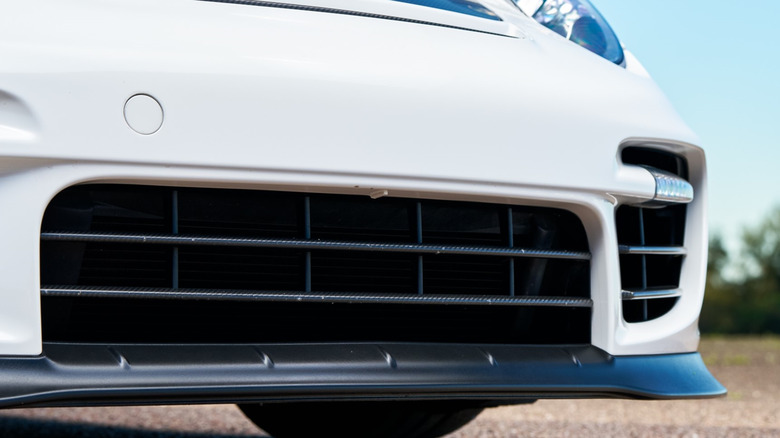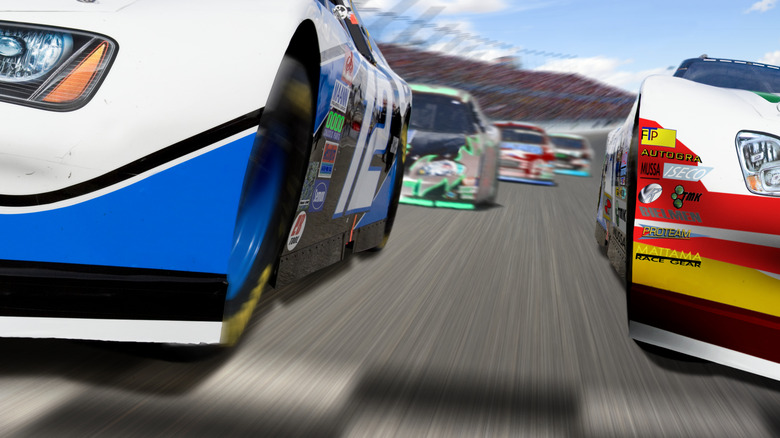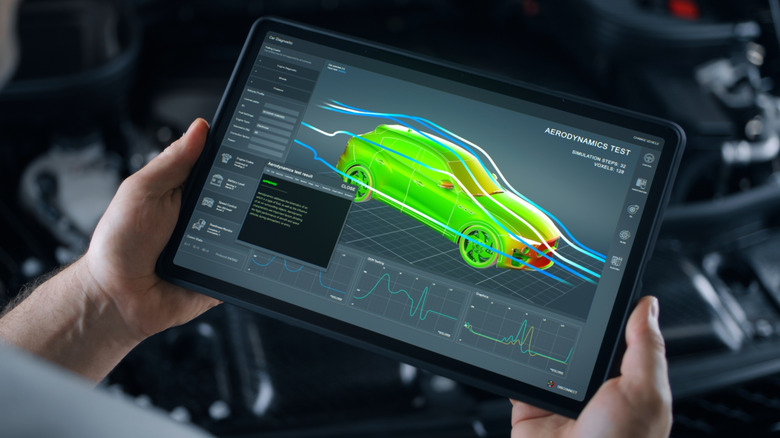Here's What That Plastic Strip Under Your Front Bumper Is Really For
Most vehicles have a thin, rubberized plastic strip extending under the front bumper, but not many drivers know what it is for. While it can sometimes let you know you've gotten too close to a curb or speed hump, that is not what it is for — even though it is better scrape the bottom of a piece of black plastic than your car's painted front panel. Known as an air dam, that thin plastic strip is all about aerodynamics, balancing drag, stability, and efficiency.
The air dam redirects high-velocity, high-pressure air from the front of the car to the sides, thereby reducing drag on the underbody. At high speed, the dam also splits airflow into a high-pressure zone above it and a low-pressure zone below, helping the front of your car stick to the road like a vacuum cleaner to carpet.
An air dam is a result of nearly a century of iterative aerodynamic design. Beginning in the 1920s, wind tunnel testing brought us decades of radical, teardrop-shaped designs like the Chrysler Airflow, the Dymaxion, and the hyper-efficient Panhard Dyna Z, with much learned along the way. For example, in the 1920s, Chrysler engineer Carl Breer found most cars of the era were more aerodynamic when going backwards.
Aerodynamic, race-proven design
Looking at the airflow around the back of a car can help us understand how this downward suction effect works. Ever been close behind a competitor on a racetrack, or far too close behind an 18-wheeler on the highway? If so, you know how strong the suction force of a slipstream can be — almost enough to tow you along behind it.
As an automobile pushes through the air, it leaves an automobile-shaped hole behind it. This hole tends to suck in everything around it — including the air underneath your car. When combined with an air dam at the front, it can reduce the air pressure underneath your vehicle close to that at the back. The stock cars that compete in NASCAR go hard on this mod, with a dam or spoiler at the front of the car and skirts around the side, but open at the back to allow this slipstream 'vacuum' to weave its underbody, stick-to-the-road magic.
The air dam is one in a long list of ways racing technology has made your car better. Some high-performance cars have an extreme version of it called a splitter — a flat, extended front lip that creates a larger area of downward force up front, balanced by a wing or spoiler high up at the back. Calculating the intricacies of aerodynamics requires an understanding of fluid dynamics, pressure gradients, and differential equations — but thankfully, car manufacturers have a regiment of boffins armed with computers to work all this out.
Will my car work without it?
In short, the downward force produced by an air dam helps counter the effect of lift at speed and provides greater directional stability. This downward force is needed to counter lift: a high efficiency, aerodynamically shaped car with a low drag coefficient can have the unwanted side-effect of generating too much lift, in much the same way a wing will create lift. In extreme cases, too much lift under a speeding vehicle can have disastrous consequences.
The good news is that if you are not out trying to set land speed records, your car is unlikely to become airborne or backflip simply because the front air dam has fallen off. The bad news is, this mishap seems to occur with alarming frequency. The plastic strip is at just the right height to hook over a curb, then pull straight off as you reverse out of that parking bay.
If this happens, grab a box of assorted plastic baut rivets from your auto parts supplier, and match a handful of these to the broken ones under your vehicle. Then simply press the air dam assembly back into place, with the extra satisfaction of knowing what that thing under the bumper of your car was there for in the first place.


